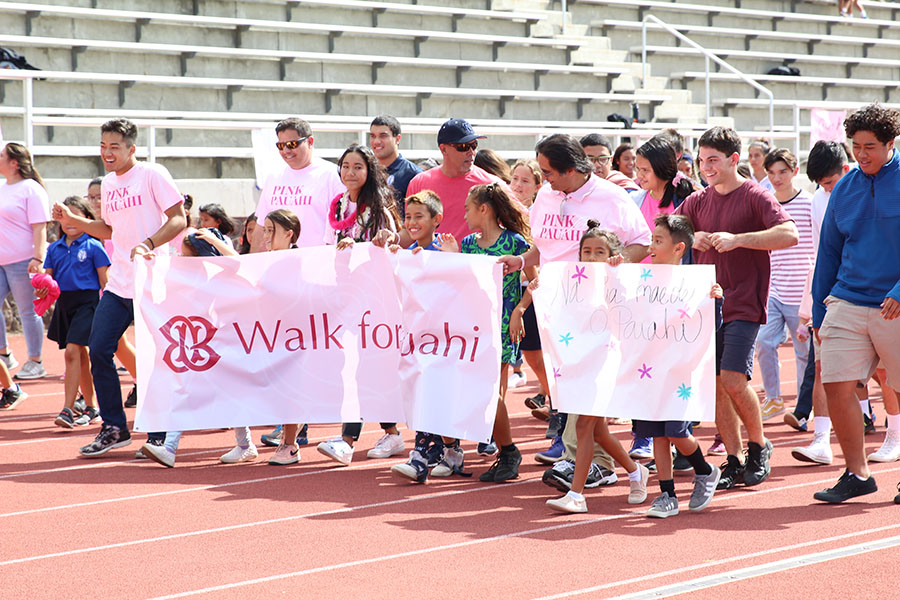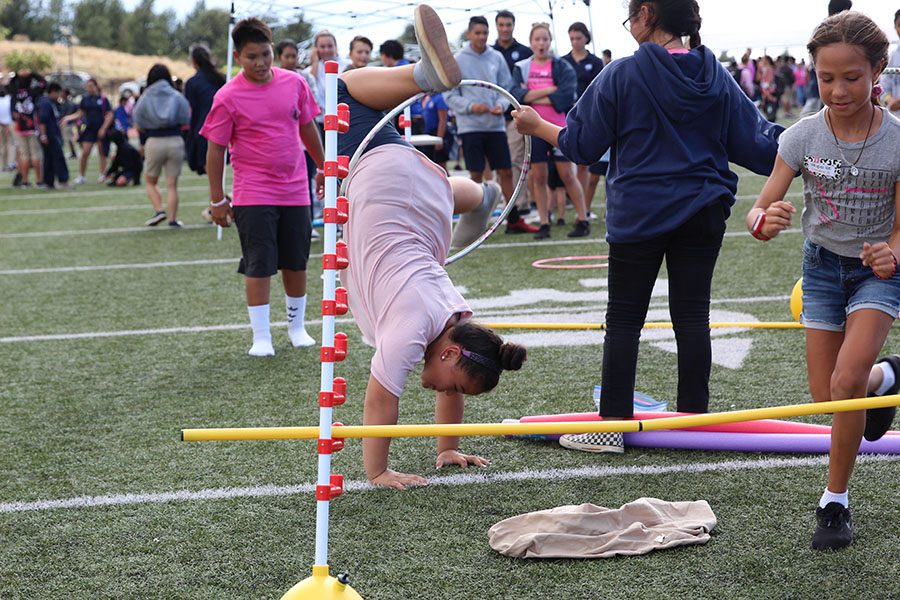Walk for Pauahi bonds haumāna, raises funds
October 21, 2019
Senior Elena “Mahie” Borge organized the Kamehameha Maui campus Walk for Pauahi, Friday. Students and staff from k-12 walked in honor of Kamehameha Schools’ founder Bernice Pauahi Bishop, who lost her fight with breast cancer, October 16, 1884.
The event was the largest in scope from among the three walks being held across the three Kamehameha Schools. The Big Island campus included students from middle and high school, and high school students at the Kapālama campus were invited to join the walk during their free periods.
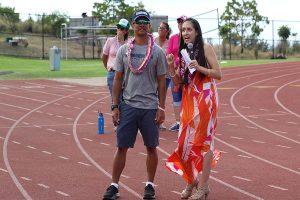
Keynote speaker Malia Medeiros praises her former coach, Alika Asing. She said that he not only helped her to become a state champion wrestler, but he is also an example of the values Ke Aliʻi Pauahi envisioned at Kamehameha Schools.
Borge spearheaded the event as her senior project with several goals in mind, according to her senior presentation:
- “To Kūlike Kākou [or] come together as one KS ʻohana in remembrance of Pauahi and to celebrate all of the many gifts she has given us.”
- “To provide students with an opportunity to practice alaka’i lawelawe as we strive to become future ʻōiwi leaders.”
- “To encourage students and faculty to mālama kou kino by participating in activities that promote wellness,” the presentation said, noting that cancer, heart disease, and diabetes are among the leading causes of death for Native Hawaiians.
Additionally, she sold $5 wristbands with the proceeds going to a new scholarship, the Kahiau Scholarship, which she created. The scholarship will be administered by the Pauahi Foundation, which offers over 100 scholarships to both KS and public school students. There are currently more than 100 different scholarships listed. Click here to learn more.
On Friday, high school students were paired up with students from elementary and middle school. Seniors paired with elementary students, juniors with 8th graders, sophomores with 7th graders, and freshmen with 6th graders. The students ate lunch together at the upper campus before the walk to and in Kanaʻiaupuni Stadium on the high school campus.
There were many positive moments that came out of the buddy system.
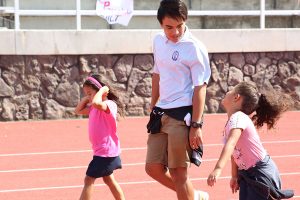
“I thought it was a great experience for both my buddy and myself. We had a ton of fun with the Pauahi Walk. I feel like our school should do more events like this where our elementary kids have time to bond with the high schoolers” senior Gabriel Arcas said.
After the keynote speech by alumna Malia Medeiros [ʻ09] and a welcome speech by Borge, students and staff walked around the stadium track twice. They carried banners and signs to promote breast cancer awareness and support for Pauahi. Older buddies held the hands of the youngest Warriors and encouraged them to have fun with it by racing, ducking under signs, and playing in the wind.
Hawaiian ensemble provided music and hula, and different high school classes oversaw various game stations scattered across the football field.
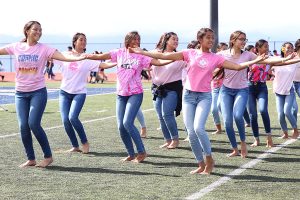
Ka Papa Hula O ʻAʻapueo performs while the Hawaiian Ensemble provides Hawaiian music.
One Standout
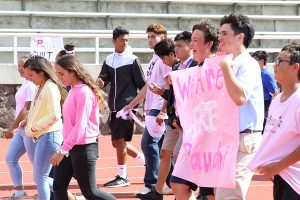
As everyone played games, enjoyed the entertainment, ate popsicles, wrote notes of appreciation for Pauahi, and answered trivia questions about her, one student kept walking.
Sophomore Laʻakea Golis held his sign and continued the walk despite all the other students moving on to the entertainment. He walked 12 more laps around the track after the first two laps were done.
“I wanted to support both Pauahi and people who know someone or suffer from breast cancer especially because a lot of people in my family suffer from breast cancer as well, so I just wanted to show support as well as send a message to whoever was down there at the field that day,” he said. “That’s why we’re really here.”
Breast Cancer risk is above average for Native Hawaiians
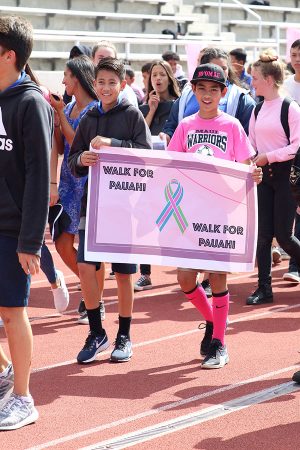
Breast cancer is a long and hard battle that millions around the world have to face, but Native Hawaiian women have a higher likelihood of getting breast cancer than other ethnic races that live in the Hawaiian Islands.
The National Institutes for Health say the chance of death in Native Hawaiian women with late-stage breast cancer is 1.5 – 1.7 percent higher than for Caucasian, Chinese, and Japanese females.
Here are more statistics about breast cancer in Hawaiʻi:
- The same study found that Japanese women who live in the Hawaiian Islands have double the rate of breast cancer than those who live in Japan.
- Every year in Hawai’i, more than 6,700 residents are diagnosed with invasive cancer, which is cancer that spreads throughout the body.
- More than 2,200 people die each year in Hawai’i because of this. The spending on cancer treatment reaches $678 million annually.
- The estimated new cases of breast cancer in the U. S. in 2019 has reached over 268,600, which makes up 15.2% of all new cancer cases in 2019.
- The estimated deaths from breast cancer in the U. S. in 2019 has reached 41,760, which means 15.5% of people diagnosed with breast cancer in 2019 have died.
- The breast cancer death toll makes up for 6.9% of all cancer-related deaths in 2019.
- After six years of decline from 2005 to 2011, the rate of deaths from breast cancer have risen for the last five years the state has records for. From a low of 12.4 deaths per 100,000 women in 2011, the rate has risen to 18.7 deaths per 100,000 women in 2015, according to data from the Hawaiʻi State Department of Health.
